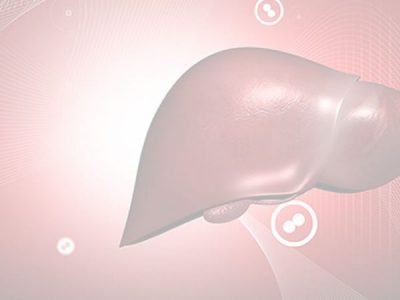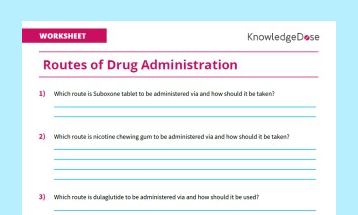Welcome to the parenteral drug therapy section for physicians and pharmacists. This clinical subject features links to resources on intravenous (iv) compatibility and administration, infusion / injectable drug monographs and more.
KEY POINTS
Some main key points to consider before administrating parenteral drugs:
- Check drug compatibility e.g. with infusion fluid, drugs that are co-administered.
- Is the parenteral drug stored according to the manufacturer’s instructions (e.g. stored in refrigerator, protected from light)?
- Are there any special handling requirements?
- Follow the drug manufacturer’s instructions on how to prepare and administer the parenteral drug.
- Follow your local hospital guideline or policy on parenteral administration.
- If the patient is fluid restricted, check that the total volume of drug infusion administered does not exceed the patient’s daily fluid restrictions.
- Are there any monitoring requirements e.g. blood pressure?
- Check that the drug prescribed can be given via the route specified.
electronic Medicines Compendium (eMC)
Summaries of Product Characteristics (SmPCs)
- Source: medicines.org.uk
- Clinical Resource: Summaries of Product Characteristics (SPCs)
- Register to Access Content: No
Pharmacokinetics of drug infusions
This article will describe, rather than derive equations to explain, the pharmacokinetics of i.v. infusions and a basic understanding of simple models of pharmacokinetics and the relationships between parameters is assumed.
- Source: academic.oup.com/journals
- Clinical Resource: Journal Article
- Register to Access Content: No
Mixing of medicines prior to administration in clinical practice: medical and non-medical prescribing
Following recommendations from the Commission on Human Medicines, medicines regulations were amended in December 2009 to enable doctors and other prescribers to mix medicines themselves and to direct others to mix medicines.
These changes apply not only to palliative care, but to all clinical areas where the mixing of medicines prior to administration is accepted practice and supported by the employer’s policies for delivery of healthcare.
The Commission also agreed parameters, principles and key points on mixing of medicines. The intention is to enable accepted good practice to continue.
- Source: gov.uk
- Clinical Resource: Guidance
- Register to Access Content: No
Mixing of medicines prior to administration in clinical practice — responding to legislative changes
It is common practice for healthcare professionals to mix one or more medicines together before administration to a patient. This is permissible under medicines legislation where one product is a vehicle for the administration of another. However, mixing two licensed medicines where one is not a vehicle for the administration of the other, results in a new, unlicensed product being produced. Prior to recent legislative changes, the law restricted mixing practice to:
- Doctors and dentists mixing medicines and then administering to a patient
- Pharmacists mixing medicines to the specification of a doctor or dentist
- Holders of a manufacturing licence.
The NPC has produced this resource for both organisations and practitioners. It is not intended that this document replaces any generic guidance or professional codes of conduct from the professional regulatory bodies, but should be read in conjunction with them. It provides advice and tools which will help with the implementation of the guidance points.
- Source: webarchive.org.uk
- Clinical Resource: Guidance
- Register to Access Content: No
Stabilis
Stability and compatibility of injectable drugs
Stabilis is a database concerning stability and compatibility of injectable drugs.
It has been compiled in an international language based on pictograms (definitions in 24 languages are provided for all the pictograms in a special dictionary). The database consists of:
- a series of Monographs
- summary information on injectable drugs
- a dictionnary for the translation of the pictograms
- references
- Source: stabilis.org
- Clinical Resource: Database
- Register to Access Content: No
To mix or not to mix – compatibilities of parenteral drug solutions
Many injectable drugs cannot be mixed together in syringes or infusions. Some cannot be safely diluted in infusion bags. Incompatibility can involve precipitation, ionic reactions, evolution of gas and denaturation of biological molecules. Knowledge of drug compatibility is needed before mixing drugs. Reference texts can provide information, but data are often unavailable for new drugs. If drugs are mixed together, the mixture should be inspected for precipitates, turbidity or changes in colour, however not all incompatibilities are visible.
- Source: nps.org.au
- Clinical Resource: Journal Article
- Register to Access Content: No
Parenteral Nutritution (PN) and Drug CompatIbility
The co-infusion of drugs and PN should be avoided. PN solutions are diverse in their composition and compatibilities with drugs can never be guaranteed.
- Source: pedmed.org
- Clinical Resource: Supplementary Material / Reference
- Register to Access Content: No
This reference contains standard dilutions including IV admixture drug concentration, infusion volumes, and infusion rates. Each monograph contains stability data, administration guidelines, and methods of preparation.
- Source: globalrph.com
- Clinical Resource: Database
- Register to Access Content: No
Light-Sensitive Injectable Prescription Drugs
In 2009, Hospital Pharmacy published a list of oral medications that require protection from light. This reference does not provide information on injectable drugs and, to our knowledge, there is no comprehensive list of injectable medications that require protection from light published in the United States. Therefore, the purpose of this table is to supplement the previously published list of oral medications by identifying injectable drugs that require protection from light.
- Source: nih.gov
- Clinical Resource: Journal Article
- Register to Access Content: No
London Health Sciences Centre
Drug Monographs
The following intravenous drug monographs are for medications commonly used in critical care.
- Source: lhsc.on.ca
- Clinical Resource: Monographs
- Register to Access Content: No
Administration of intravenous drugs
Cumbria Partnership NHS Foundation Trust
The following intravenous drug monographs are for medications commonly used in critical care.
- Source: webarchive.org.uk
- Clinical Resource: Guideline
- Register to Access Content: No
The purpose of this tool kit is to provide evidenced-based recommendations and best practices on setting and managing high-risk IV medications limit settings for adult patients in intensive and acute care units.
- Source: med.umkc.edu
- Clinical Resource: Table
- Register to Access Content: No
- Source: scottishintensivecare.org.uk
- Clinical Resource: Document
- Register to Access Content: No
- Source: newcastle-hospitals.org.uk
- Clinical Resource: Chart
- Register to Access Content: No
Syringe Driver Compatibility Guidance
- Source: safercare.vic.gov.au
- Clinical Resource: Guidance
- Register to Access Content: No
Potassium administration via the intravenous route should only be used when the oral or enteral route is not available or will not achieve the required increase of serum potassium within a clinically acceptable time.
- Source: sps.nhs.uk
- Clinical Resource: Medicines Question and Answer
- Register to Access Content: No
Giving CosmoFer® (iron dextran) as a total dose infusion
Use a stepped process to safely and rapidly correct iron deficiency in adults over 14 years in hospital.
- Source: sps.nhs.uk
- Clinical Resource: Instructions
- Register to Access Content: No
Immunoglobulin: when to use
Public Health England
PHE’s immunoglobulin handbook, providing guidance on administering immunoglobulin to prevent serious disease.
Documents
- Rabies and Immunoglobulin Service
- Hepatitis A immunoglobulin
- General product information and how to administer immunoglobulin
- Guidance on the use of Diphtheria anti-toxin (DAT)
- Hepatitis B immunoglobulin
- Babies of hepatitis B infected mothers
- Mumps and immunoglobulin
- Polio immunoglobulin
- Rabies: Human Rabies Immunoglobulin (HRIG)
- Source: gov.uk
- Clinical Resource: Handbook
- Register to Access Content: No
European Guidelines on the use of
high-dose intravenous immunoglobulin in dermatology
Developed by the European Dermatology Forum
- Source: edf.one
- Clinical Resource: Guideline
- Register to Access Content: No
Using intramuscular injections in people on oral anticoagulants
Advice on risks related to use of small volume (less than 3mL) intramuscular (IM) injections in people on oral anticoagulants (for example, DOACs, warfarin)
- Source: sps.nhs.uk
- Clinical Resource: Guidance
- Register to Access Content: No
Digoxin – Loading Dose Guide (Adults)
The intravenous route should be reserved for use in patients requiring urgent digitalisation for supraventricular arrhythmias
- Source: salisbury.nhs.uk
- Clinical Resource: Guidance
- Register to Access Content: No
Oral or intravenous antibiotics?
Selecting the most appropriate route of administration is part of the quality use of medicines. For many patients with bacterial infections who require treatment with an antibiotic, an oral formulation is the most appropriate choice. However, patients in hospital are often given intravenous antibiotics. While there are clinical circumstances when parenteral administration is indicated, for some infections oral therapy can be equally efficacious.
- Source: nps.org.au
- Clinical Resource: Journal Article
- Register to Access Content: No
Continuous Antibiotic Infusions
These guidelines were prepared by the Department of Surgical Education, Orlando Regional Medical Center
- Source: surgicalcriticalcare.net
- Clinical Resource: Guideline
- Register to Access Content: No
Intravenous-to-Oral Switch Therapy
Switching from intravenous (IV) to oral (PO) therapy as soon as patients are clinically stable can reduce the length of hospitalization and lower associated costs. While intravenous medications may be more bioavailable and have greater effects, some oral drugs produce serum levels comparable to those of the parenteral form. Medications involved in switch therapy include antibiotics, analgesics, antipsychotics, and antivirals.
- Source: medscape.com
- Clinical Resource: Article
- Register to Access Content: No
Intravenous (IV) paracetamol is licensed for the short-term treatment of moderate pain, especially following surgery and for the short-term treatment of fever.
- Source: nice.org.uk
- Clinical Resource: Guidance
- Register to Access Content: No
Fluid Management in Adults and Children: Core Curriculum 2014
An understanding of fluid compartments, including the structure and function of the cell and capillary membranes and the changes that occur in health and in disease, is key to providing appropriate fluid management.
- Source: ajkd.org
- Clinical Resource: Journal Article
- Register to Access Content: No
British Consensus Guidelines on Intravenous Fluid Therapy for Adult Surgical Patients
On behalf of BAPEN Medical – a core group of BAPEN, the Association for Clinical Biochemistry, the Association of Surgeons of Great Britain and Ireland, the Society of Academic and Research Surgery, the Renal Association and the Intensive Care Society.
- Source: bapen.org.uk
- Clinical Resource: Guideline
- Register to Access Content: No
Intravenous Fluids: It’s More Than Just “Fill ’Er Up!”
The purpose of this article is to review basic water and sodium metabolism and relate it to the choice of IV fluid as a function of the volumetric status of the “typical” hospitalized patient and their serum sodium concentration.
- Source: virginia.edu
- Clinical Resource: Journal Article
- Register to Access Content: No
What are Current Recommendations for Treatment of Drug Extravasation?
- Source: uic.edu
- Clinical Resource: Frequently Asked Question
- Register to Access Content: No
A complication of giving intravenous medicines is extravasation. Extravasation occurs when a medicine leaks from a blood vessel and causes injury to the surrounding tissue.
- Source: medicineslearningportal.org
- Clinical Resource: Tutorial
- Register to Access Content: No
The intravenous route provides a rapid way of administering drugs, fluids, blood products and parenteral nutrition.
- Source: medicineslearningportal.org
- Clinical Resource: Tutorial
- Register to Access Content: No
To gain an understanding of the issues associated with Subcutaneous injection sites.
- Source: nottingham.ac.uk
- Clinical Resource: CE / CPD / Learning
- Register to Access Content: No
Subcutaneous injection techniques
To gain understanding of the issues associated around the procedure for subcutaneous injections
- Source: nottingham.ac.uk
- Clinical Resource: CE / CPD / Learning
- Register to Access Content: No
Subcutaneous and intramuscular medicines
Administration of drugs and fluids by the subcutaneous route may be by direct injection (e.g. insulin, enoxaparin), by intermittent or continuous infusion (e.g. diamorphine, terbutaline) or by implantation (e.g. testosterone).
- Source: medicineslearningportal.org
- Clinical Resource: Tutorial
- Register to Access Content: No
People will talk to you about Venflons, Hickman lines, triple-lumen catheters and many others. What do they all mean? On this page we hope to explain for you, using example pictures.
- Source: medicineslearningportal.org
- Clinical Resource: Tutorial
- Register to Access Content: No
Resources last checked: 11/07/2024



